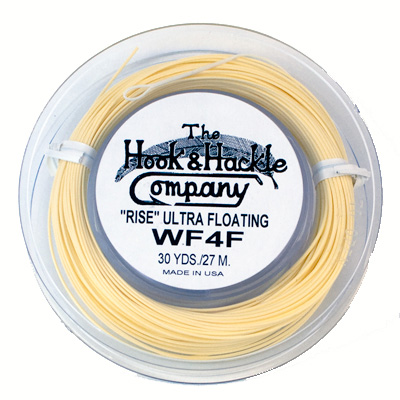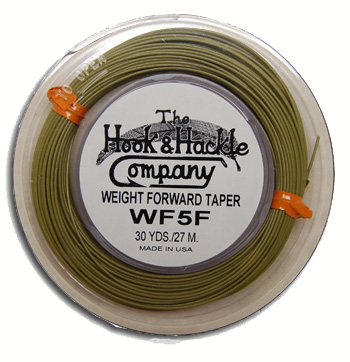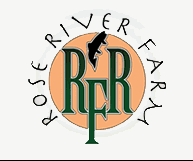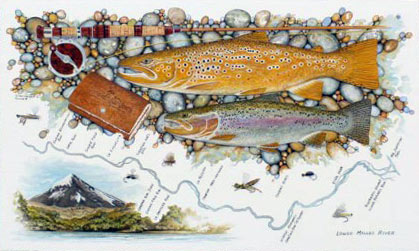Fly Lines
Your source for flyfishing and flycraft resources since 1975.
Choosing a fly line has become complicated over the years, in part because of the demands of the seasoned fly fisherman and in part because of refinements in technology and manufacturing. With that in mind, the purpose of this page will be to help you decide what you need to start if you’re a beginner, or what you can do to improve, if you have some experience.
There are two basic designs in fly lines which are called tapers - 90 feet or more in length. Behold:
![]()
Double Taper
![]()
Weight Forward Taper
Also, there are lines that float and lines that don’t float. The vast majority of folks who fly fish use only a floating line because they’re catching fish in the top 6’ or so of water. So chances are, you want a floating line. Double taper line is a favorite of many fly fishing enthusiasts who fish slower action rods, like older graphite rods, fiberglass & bamboo. Nice thing about the double taper is that when one side wears out, you can switch the line around and fish the ‘fresh’ end, i.e. - you’ll save money. Many fishermen who use the faster and stiffer graphite rods favor the weight forward taper. Different manufacturers all have different designs to their weight forward tapers, but generally the idea is the same: to add extra weight towards the casting part of the fly line. This can be particularly helpful with casts of 50 feet or more, but since most fly fishermen cast within a shorter range of only 25-30 feet, the weight forward provides little benefit.
My thought on what you should buy if you are just starting out OR if you want to improve is simple: buy the double taper line and beat it up by practicing your casting in an empty lot. Spending more money on a line will not improve your casting nearly as much as practice. Period!!!!! Money spent with a good instructor or a good DVD (Joan Wulff’s is one of the best) would be a worthy investment.
And you should buy our Hook & Hackle fly lines because you’ll save money, right? Nope!! You should buy them because our particular tapers are designed by one of the most experienced design teams in the USA and is made of the finest materials and coatings available in the USA! In other words, we know you cannot find better all around floating lines than ours.


Sub Surface Fly Lines
Here is where you’ll find the lines with subtleties for fishing deeper than 5 to 6 feet. Generally, there are three types: intermediate, sinking and sink tip lines. Intermediate lines sink, but they do so slowly, generally 1-1 1/2 inches per second. Sinking lines have faster sink rates than intermediate lines, usually 2 1/2 or more inches per second. And sink tip lines have only the first 10 to 30 feet that sink. See the chart for guidelines. Even if you’re new to the sport, you can envision fishing situations for which these lines would benefit your fishing: catching striped bass off the east coast, fishing for largemouth bass in a Texas lake or maybe steelhead in Alaska!
| Descrip/no. | Rate - inches/second |
| Intermediate | 1 - 1.5 |
| #2 | 2.5 - 3 |
| #3 | 3.5 - 4 |
| #4 | 4.5 - 5 |
| #6 | 6.25 - 7 |
One last word on lines. As you peruse our store, you’ll see some outstanding lines that are specific to types of fishing like for stripers, trout, tropics, lakes, two-handed casting and so on. As you fish more and more, and in varied situations, you’ll naturally find these l
For you die-hards, there's a table of line weights in grains below. In case you didn't know, the weight applies to the first 30' of line only.
| Modern WF or DT | Weight in Grains |
| 3 | 100 |
| 4 | 120 |
| 5 | 140 |
| 6 | 160 |
| 7 | 185 |
| 8 | 220 |
| 9 | 250 |
| 10 | 300 |
| 11 | 350 |
| 12 | 400 |
| 13 | 450 |
| 14 | 500 |
| 15 | 550 |
| 16 | 600 |
| 17 | 650 |
| 18 | 700 |
A Word on Loops
I use loops on about half of the lines I fish. If they're already on the line, I use them, sometimes I add my own, sometimes I cut them off and sometimes I just don't bother. Most of my fishing is for trout in Montana and Pennsylvania, so you have an idea of the size of fish I expect to catch.
Having said that, the idea of a really huge fish on a factory made loop actually sends shivers down my spine! I cannot imagine that a 'ready to go' loop will hold better than my own tied nail know!






